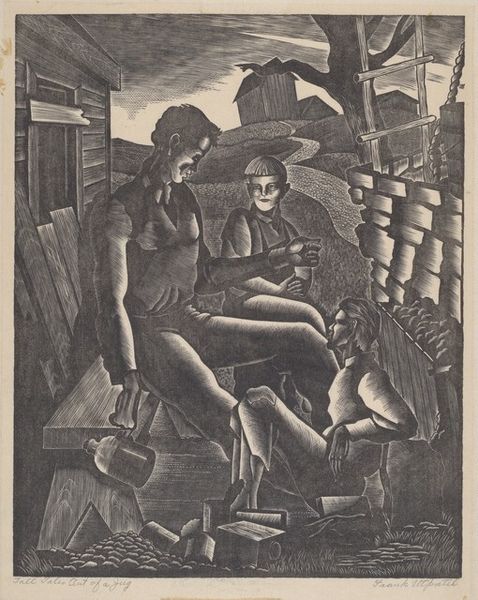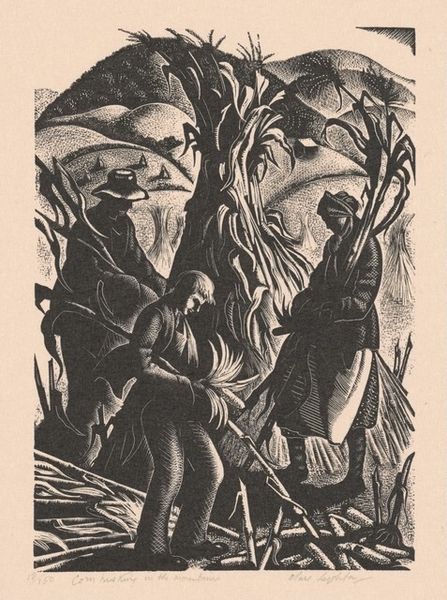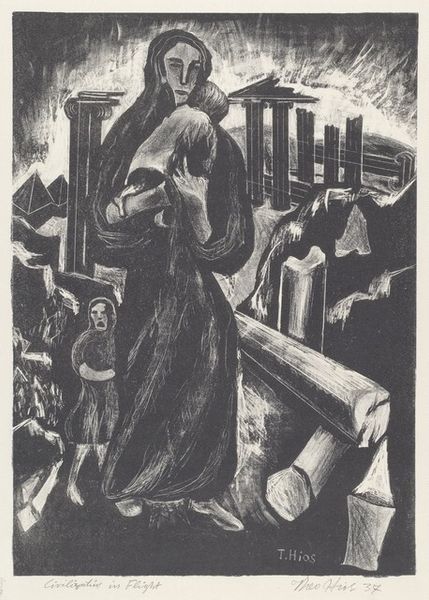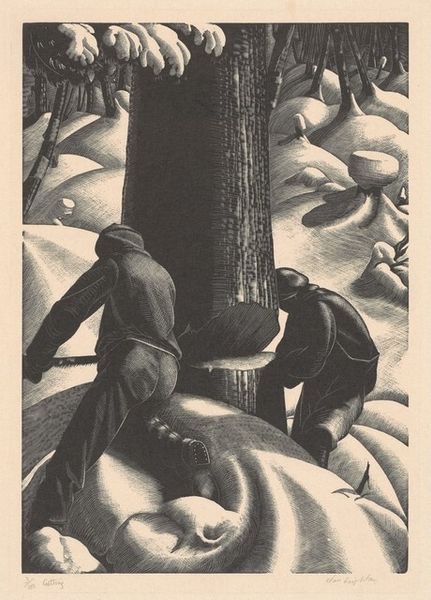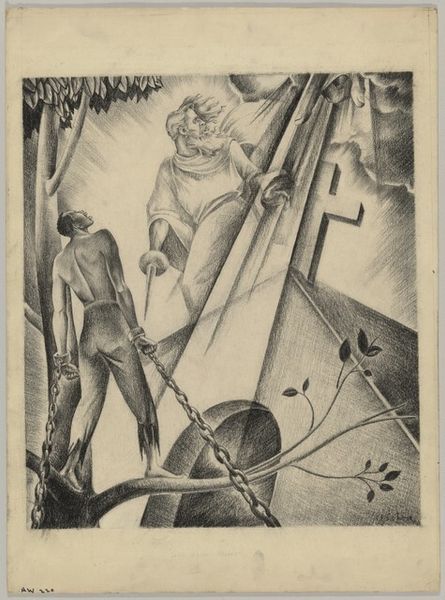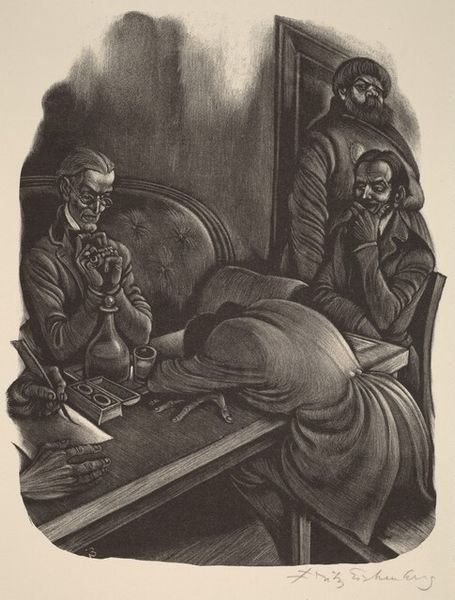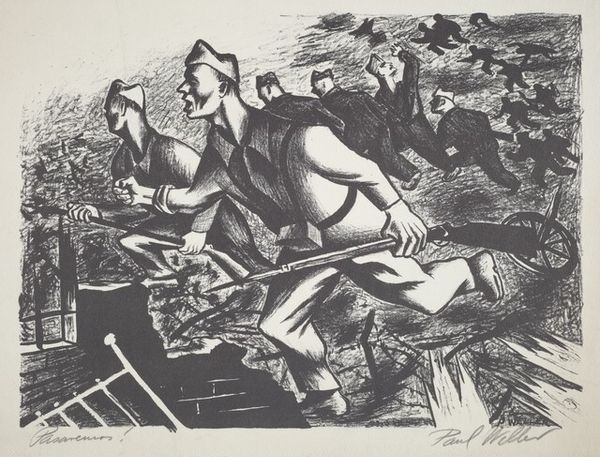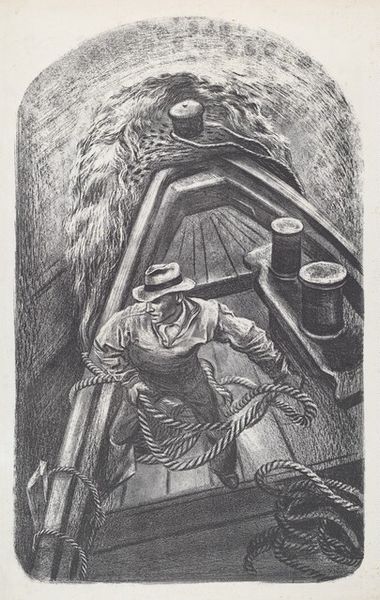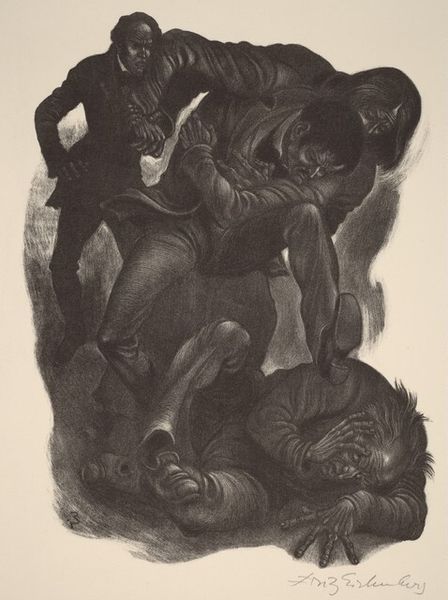
drawing, print
#
portrait
#
drawing
# print
#
figuration
#
surrealism
#
portrait drawing
#
genre-painting
#
realism
Dimensions: image: 379 x 310 mm sheet: 516 x 400 mm
Copyright: National Gallery of Art: CC0 1.0
Curator: The somber stillness really grabs you, doesn't it? Editor: It does. There’s an overwhelming sense of weariness. And consider this lithograph by Bernard Joseph Steffen, created around 1938; it's titled "Untitled (Hitchhiker and Family)." Steffen's choice of stark black and white amplifies this mood considerably. Curator: Absolutely. Visually, the family is framed by the harsh realities of the roadside – a weathered fence, a barren tree offering meager shade. Notice how the angular lines contrast sharply with the curve of the mother's exhausted form and the infant cradled in her arms. This is the visual language of displacement and the very uneven distribution of social safety nets during the late Depression era. Editor: I am drawn to the symbolic weight of the tree. In many cultures, it signifies shelter and refuge, yet here it appears almost menacing, its branches casting deep shadows over the figures. Consider how it almost imprisons them. Curator: That resonates deeply. The family is trapped not only geographically but also by socio-economic forces. The man's pose – a mix of fatigue and resignation – is telling. The American Dream seems impossibly distant, an indictment of failed policies and societal inequities. Editor: And his face conveys such a striking feeling of quiet resolve. A glimmer of hope remains. A pristine white suitcase and a neatly rolled blanket sit close by, both images holding a kind of talismanic power. Despite their present hardship, they're not entirely without resources, physical or perhaps even spiritual. Curator: A fair point. The iconography certainly gestures to the stubborn persistence of the human spirit in the face of adversity. Editor: But even so, consider the image holistically. Steffen does more than just represent suffering; he provokes critical engagement. The family's isolation compels the viewer to confront uncomfortable truths about privilege, dispossession, and the often-invisible human costs of systemic failure. Curator: That's well stated. It leaves me wondering: are we looking at an unvarnished historical record, or a potent and unfortunately still relevant mirror reflecting our own times? Editor: Indeed. For me, this work reveals how artistic images may possess layers of symbolism that speak to historical conditions while simultaneously resonating in profound and lasting ways.
Comments
No comments
Be the first to comment and join the conversation on the ultimate creative platform.
